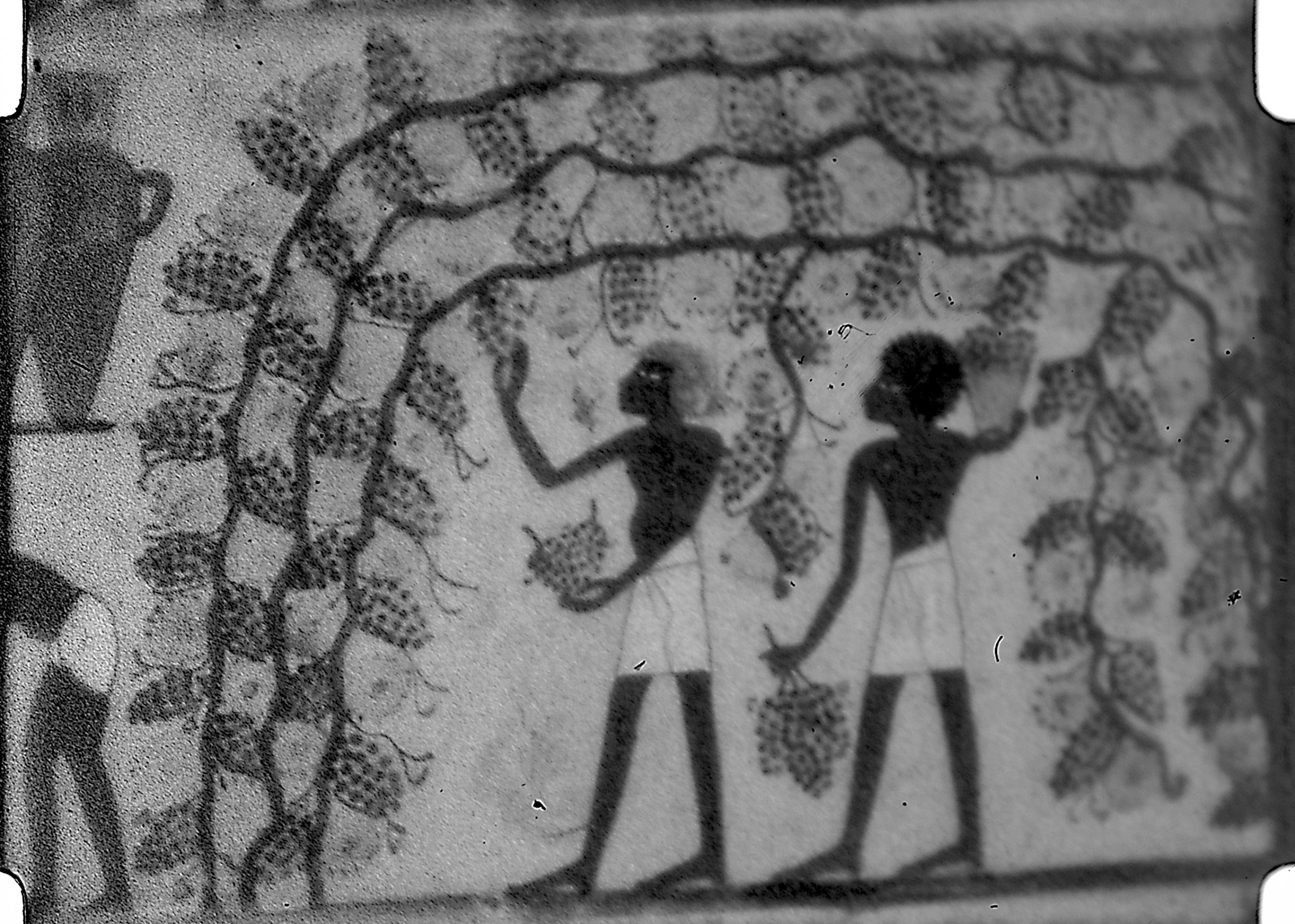
Still from The Tombs of the Nobles. Smithsonian Museum.
United States
English
400 ft
16mm
B&W
Silent
"The Tombs Of The Nobles, 400 ft., 16mm., is distinguished both in its subject matter and technical triumph over seemingly insuperable photographic odds. In it Mr. Hansen has achieved a clear and valuable record of Egyptian art and history as he found them presented on the interior walls of countless Egyptian tombs. Only by a careful placing and manipulation of sheets and mirrors in the cramped space of each tomb was Mr. Hansen able to cast sufficient light from the doorways onto the hundreds of paintings which he photographed. The film's continuity has been planned and edited in a simple, documentary style, adapted for use as an informal lecture subject. Its technical accomplishment seems unparalleled in the annals of amateur filming and has been well employed in recording subject matter entirely different from the general amateur picture." Movie Makers, Dec. 1931, 658.
The film is a part of "John V. Hansen Travel Footage of Egypt ca. 1926-1930", held in the Human Studies Film Archives, Smithsonian Museum.
Discussed in Charles Tepperman's Amateur Cinema: The Rise of North American Moviemaking, 1923-1960, 189-190.
Human Studies Film Archives, Smithsonian Museum
"Edited film chronicles John V. Hansen's and his wife's travels from New York City to Egypt by way of Italy. Filmed on the way to Egypt are leaving New York City harbor, ship board activities and scenes of Italy (Naples, Bay of Naples, Vesuvius, Syracuse, Sicily, and Ischia Island). Scenes in Egypt include Cairo, El-Hazar Mosque, Mosque of Amr, Mohamed Ali Mosque, Alabaster Mosque, Sultan Hasan Mosque, Mausoleum of Twefig Pasha, Tombs of the Caliphs, Heliopolis, Maqattan Hill, the Egyptian Museum, Saqqara, Temple of Hathor, Great Pyramids, Libyan Desert, Fayum City, Temple of Dendur, Rock Temple of Gerf Hussein, Temple of Siboua, Rock Temple of Abu Simbel, Wadi Halfa, Dabarose, Colossus of Abu Simbel, Assuan Komombo, statue of Horus, Assuan Dam, Luxor Medamutt, Memnons, Deir El Medina, Ramesseum, Seti Temple, Colossus of Memnon, Valley of the Kings, Temple of Ptah obelisk, Tomb of Menne, Hatshepsut's Tomb, Medient Habu, Tombs of the Nobles, Memphis, Kirdasa village, and the Nile River. Footage also contains many scenes of local life including bazaars and markets, snake and scorpion handlers, musicians, camels and water buffalo, farming and irrigation, water wheels, boats on the Nile, railway station and street scenes, craftsmen, tourists on camels and visiting various sites and archaeological excavations." Viewing notes via the Smithsonian Museum.